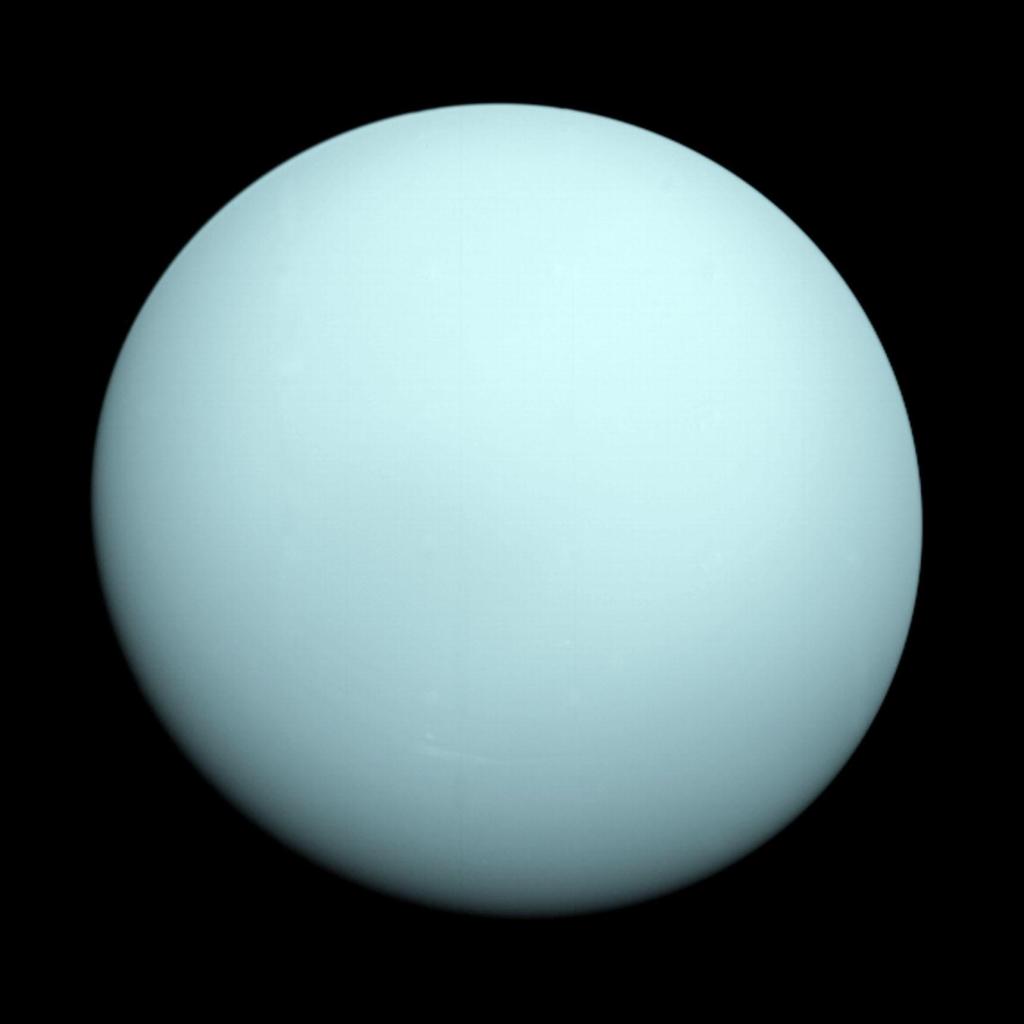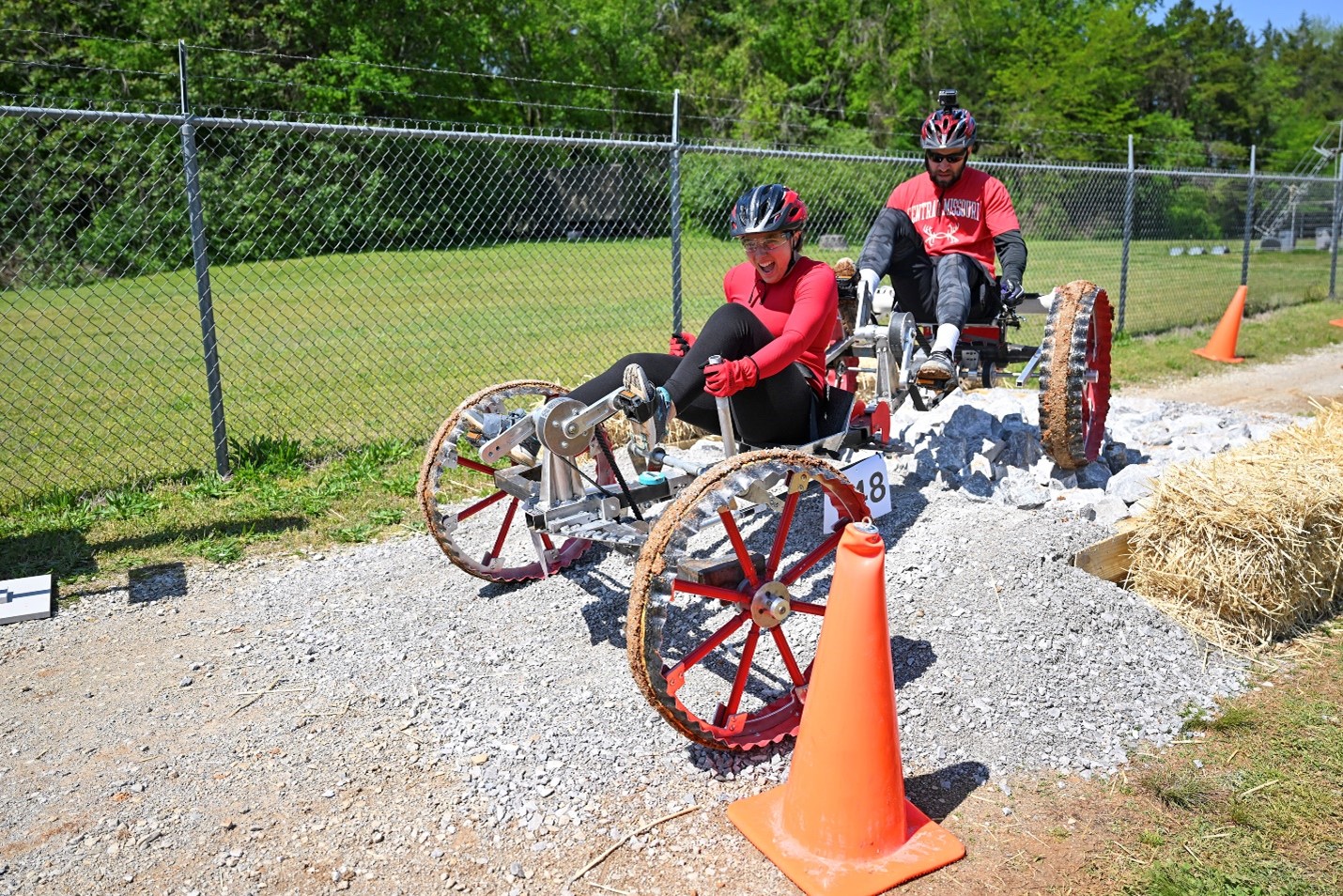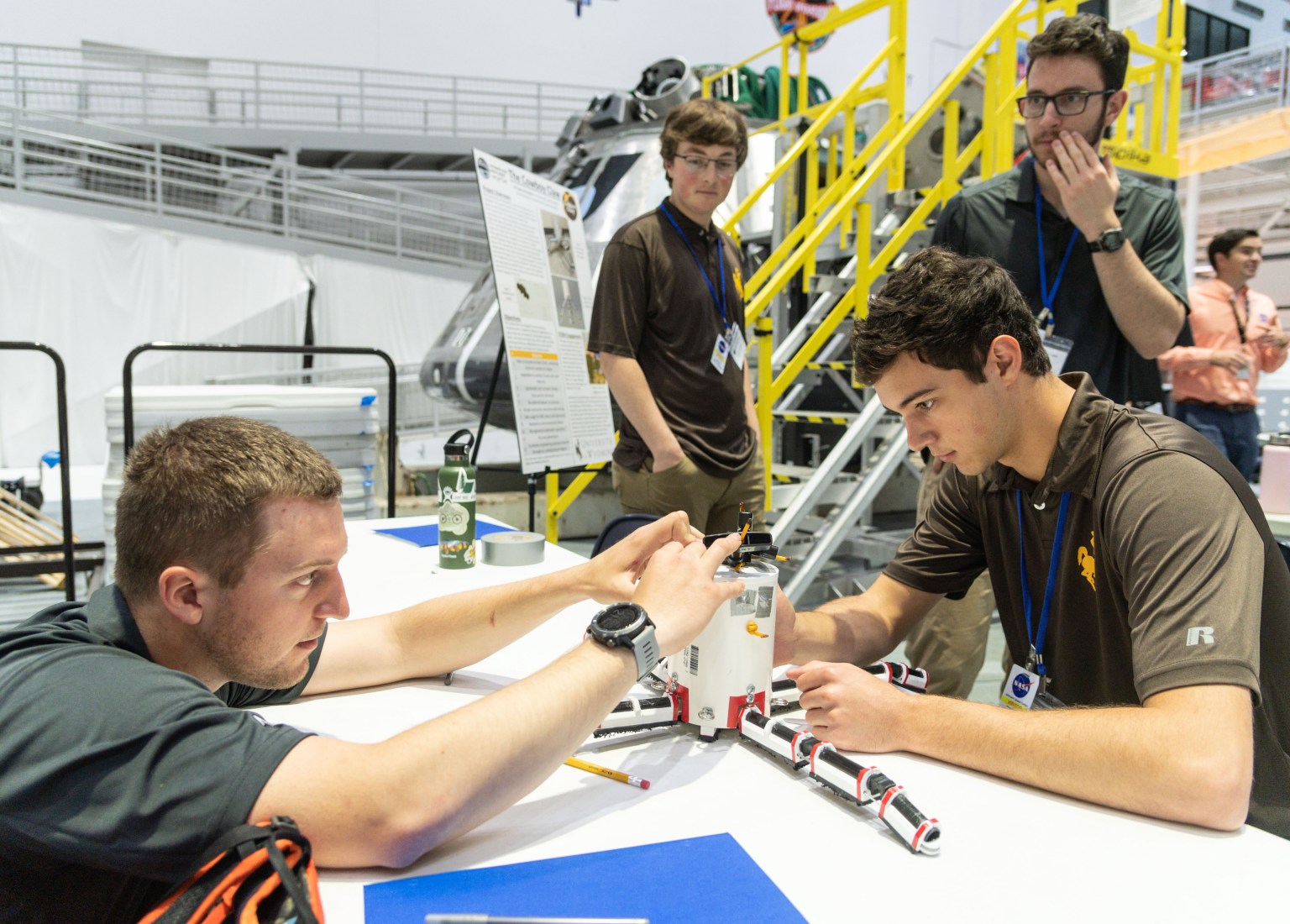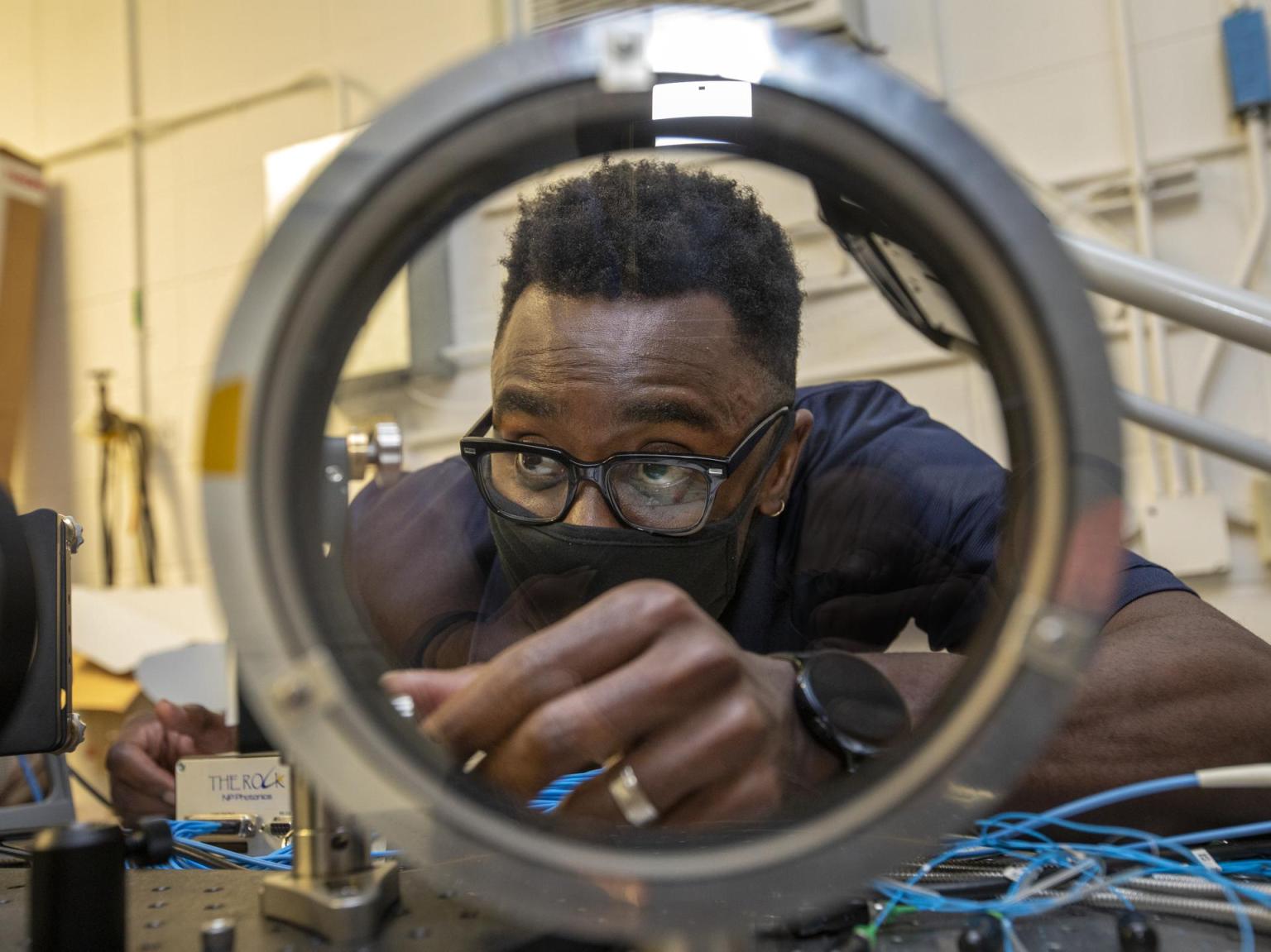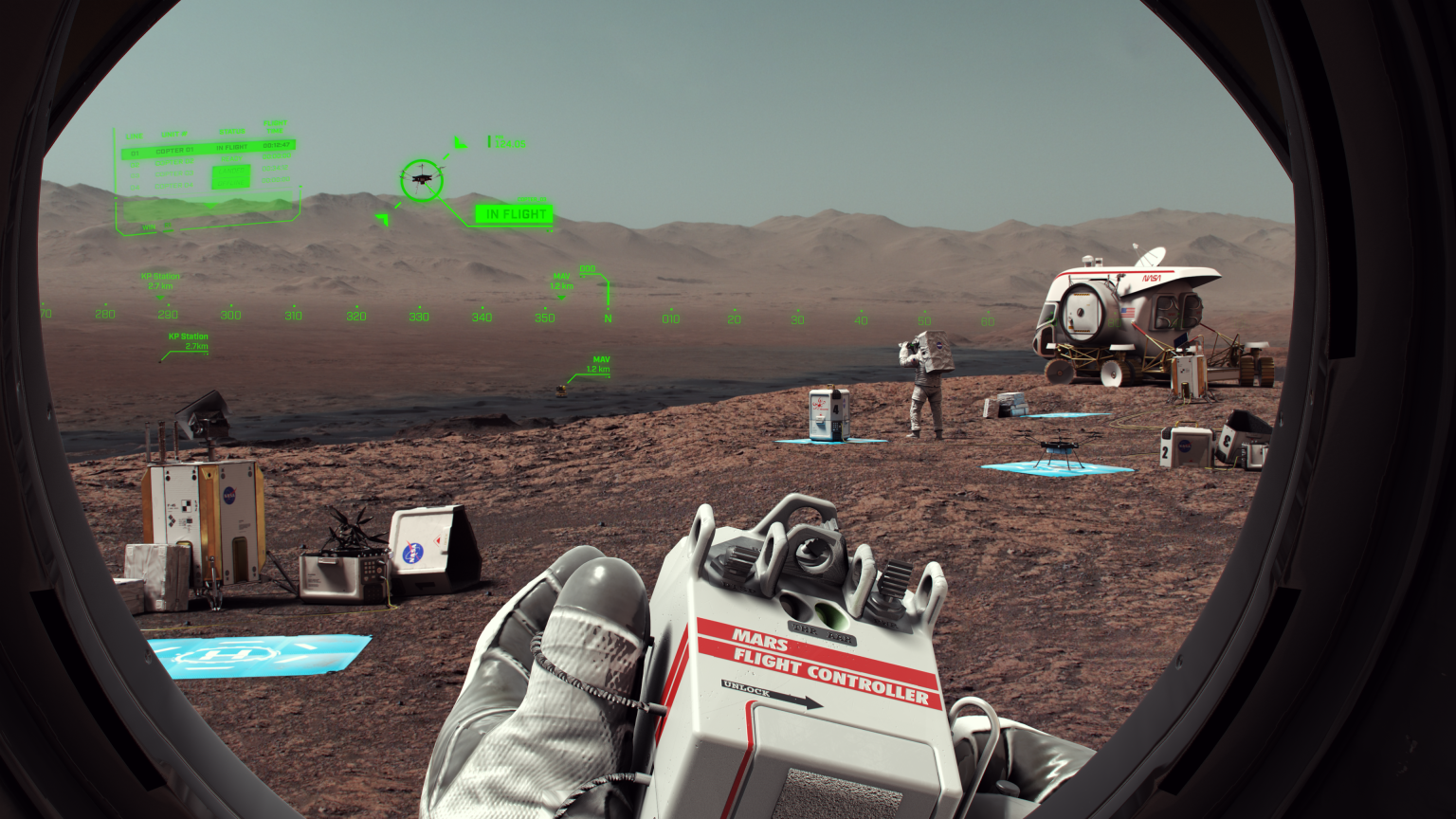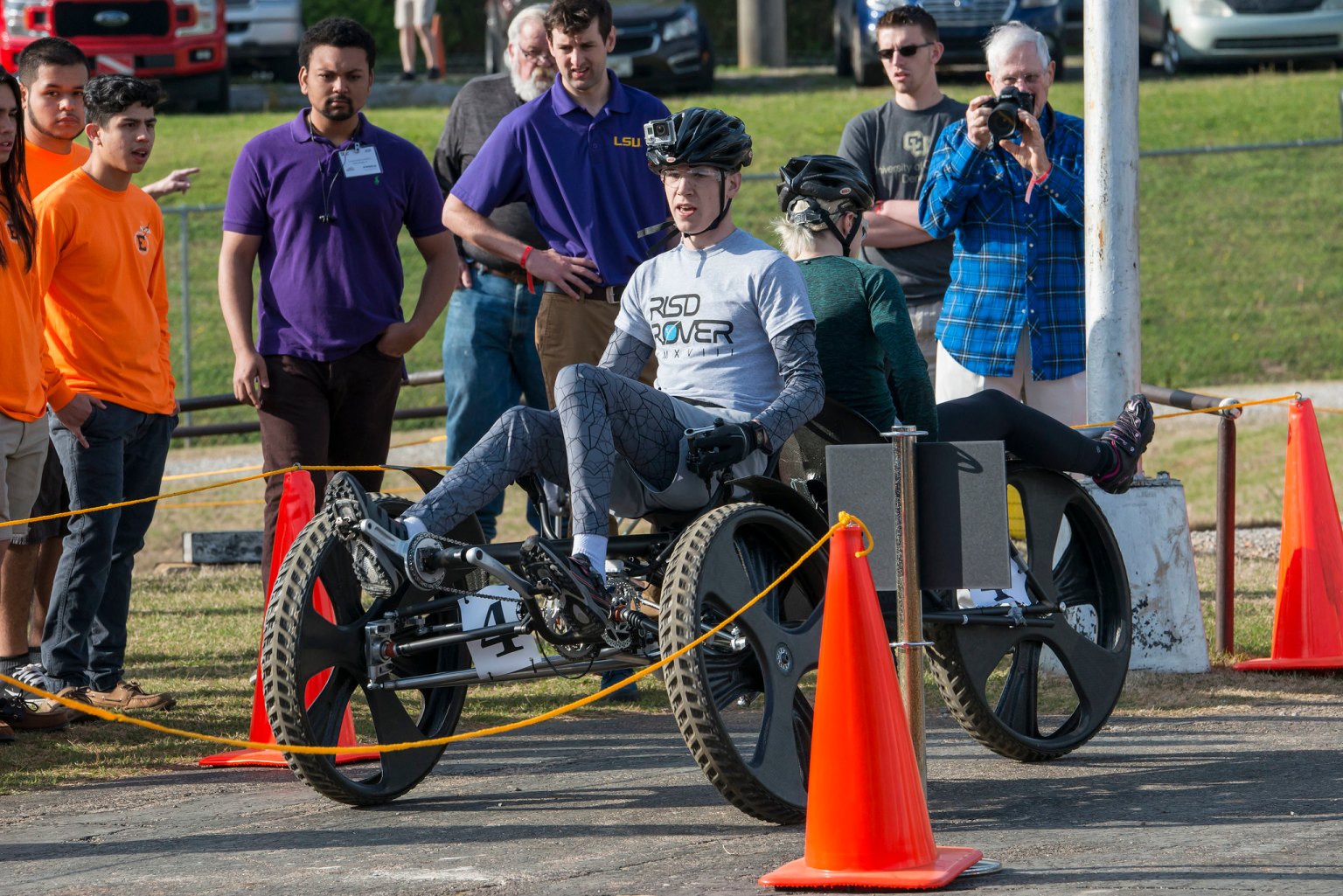Background: The NASA Human Exploration Rover Challenge
Since its inception in 1994, the Human Exploration Rover Challenge (HERC) has been hailed as one of the most exciting student challenges taking place in Huntsville, AL, with support from NASA’s Marshall Space Flight Center. Formally known as the Great Moonbuggy Race, the challenge was conceived in the spirit of NASA’s Apollo missions to the moon, and the Apollo Lunar Roving Vehicle (LRV) that carried the first men in history across the lunar surface. Students created vehicles (dubbed “moon buggies”) to face challenges similar to those engineers at NASA’s Marshall Space Flight Center addressed in preparation for Apollo 15.
Today, humankind is returning to the moon through NASA’s Artemis Mission with the goal of landing the first woman, first person of color, and first international partner astronaut on the moon. The Artemis mission will explore the moon for scientific discovery, technology advancement, and to learn how humans can live and work on another world as we prepare to propel ourselves further into space, to Mars. The next humans to land on the moon will use innovative technologies to explore more of the lunar surface than ever before and inspire the next generation of explorers—the Artemis Generation.
Each year the NASA Human Exploration Rover Challenge (HERC) features an engineering design challenge to engage students worldwide in the next phase of human space exploration. As an Artemis Student Challenge, HERC draws inspiration from both the Apollo and Artemis missions, emphasizing designing, constructing, and testing technologies, as well as traversing unique environmental terrain.
During Apollo 15 astronauts utilized the first automotive vehicle on the moon, the Lunar Roving Vehicle (LRV). With this rover, astronauts were able to collect more lunar samples than the previous two Moon-landing missions combined and spent twice the time on Moon than Apollo 14.
NASA’s 21st century lunar exploration program is called Artemis. Artemis missions will turn science fiction into science fact as we make new discoveries, advance technologies, and learn to live and work on another world. The commercial partners have already been chosen to design and construct the next-generation rover, the Lunar Terrain Vehicle (LTV).
NASA’s goal with the Artemis mission is to send the first woman and first person of color for exploration at the Moon’s South Pole and to develop a sustained human presence on the Moon. On the Moon we will learn what resources are available and abundant enough that we don’t need to send them from Earth. Using resources, including water, found in space will help reduce our dependency on Earth as we move farther into the solar system.
With human exploration of Mars on the horizon, NASA is developing many of the technologies needed to send human farther into the solar system today. Our work on the Moon under the Artemis program will prepare us for that next giant leap sending astronauts to Mars.
Lunar science on the surface of the Moon will be conducted with polar and non-polar landers and rovers which will explore areas not investigated during Apollo missions. This student design challenge encourages the next generation of scientists and engineers to engage in the design process by providing innovative concepts and unique perspectives. HERC also continues the Agency’s legacy of providing valuable experience to students who may be responsible for planning future space missions including crewed missions to other worlds.
This year, NASA will mark 31 years of engaging students in an engineering design challenge to design, build, and race human-powered vehicles over simulated lunar/Martian terrain. Just as space travel has evolved over the past 31 years and is now returning to its roots by revisiting the lunar surface, HERC has evolved and continues to re-align its core framework to NASA’s current mission directorates and commercial partners.
In 2014 the motivation changed to mimicking design challenges faced by engineers designing rovers for future exploration missions to a variety of celestial bodies. As technology advanced and materials used in the building of space travel vehicles became lighter and stronger, size restrictions on the rover were changed from fitting inside a 4-ft. (1.2 m) cube. Beginning in 2014, the rover constraint was changed to a 5-ft. (1.5 m) cube.
Since 2016, to advance the rigor and to better align with the NASA engineering design process, teams must design and fabricate their own non-pneumatic tires/wheels. Purchasing commercially available products are prohibited. As the Artemis mission became the forward face of NASA, in 2020, the challenge was again adapted, and a new rule that the rover riders must be one male and one female was put into effect. Now, with the success of Artemis I and the launch of Artemis II on the horizon, mankind is getting closer to setting foot on the moon once again. As in the past, HERC is evolving; with new goals and ideas, to continue to challenge the next generation of rover riders; the Artemis Generation.
This year we are proud to announce a new pathway to experience HERC. Teams will choose to participate in either the traditional Human-Powered (HP) or the new Remote-Controlled (RC) divisions. This change not only better aligns HERC with current NASA missions, it expands the reach of the program to include more STEM disciplines and grade levels. To learn more about the Artemis missions, including specific plans for how to achieve these goals, visit: https://www.nasa.gov/feature/artemis/
HERC Objective and Narrative
Since its inception in 1994, the primary objective of HERC is for student teams to design, develop, build, and test human-powered rovers capable of traversing challenging terrain, and a task tool for completion of various mission tasks. The challenge is now expanded into two divisions with the addition of HERC: Remote Operated Vehicular Research (ROVR). Teams choosing to compete in the Human Powered (HP) division will focus their development on a safe and functional vehicle, while Remote Controlled (RC) division teams will work to solve complex scientific tasks with a purpose-built vehicle.
Teams earn points by successful completion of design reviews, designing and assembling a rover that meets all challenge criteria, and successfully completing course obstacles and/or mission tasks. The team with the highest number of points accumulated throughout the project year in each category will be the winner of their respective division (middle school/high school and college/university.)
The HP competition course requires two students, at least one female, to use the student-designed vehicle to traverse a course of approximately one half-mile that includes a simulated field of asteroid debris, boulders, erosion ruts, crevasses, and an ancient streambed. The challenge’s weight and size requirements encourage the rover’s compactness and stowage efficiency. Just as in the Apollo 14 surface mission, teams must make real-time decisions about which mission objectives to attempt and which to leave behind—all driven by a limited, virtual eight-minute supply of oxygen. Like in the Apollo 15 mission, competing teams must be prepared to traverse rough terrains over the course of two excursions on a roving vehicle. RC teams will find the obstacle course much easier, but are required to attempt two mission tasks to help determine a suitable location for a future NASA Human Landing System (HLS) crewed landing.


